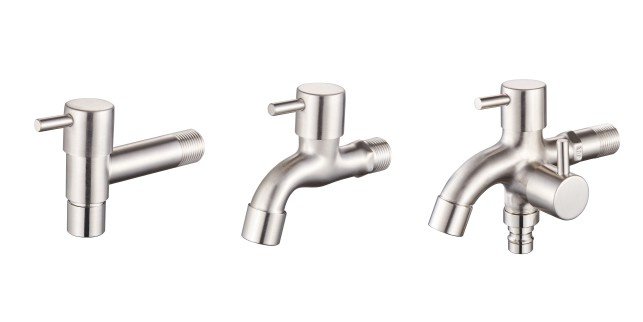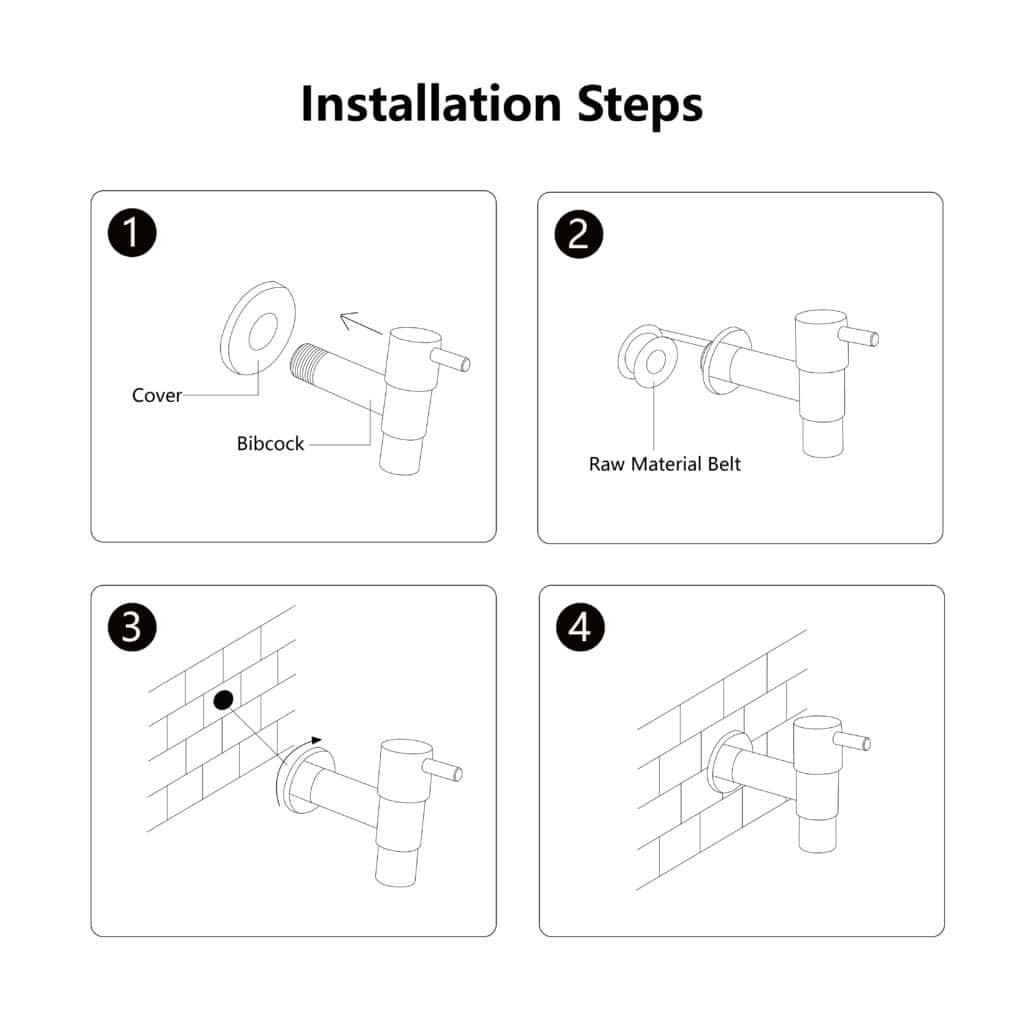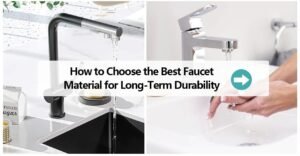Understanding the Bibcock Meaning
A water faucet plays a pivotal role in our daily lives, and the term “bibcock” denotes an essential component within its structure. Let’s delve into this terminology and comprehend its role within plumbing systems.
Defining Bibcock
The term “bibcock” refers to a specific type of faucet commonly used in plumbing systems, especially for outdoor water sources. Understanding its structure and purpose sheds light on its significance within plumbing mechanisms.
A bibcock, also known as an outside tap or faucet, represents a specific type of valve used predominantly in plumbing setups, especially for outdoor water access points. Its distinct design and functionality differentiate it from other faucet types.

Structural Components
- Valve: The valve stands as a crucial component of the bibcock. It controls water flow via rotation, sometimes comprising ball valves or plug valves, operable through handles or knobs.
- Handle or Knob: Users operate the valve by rotating the handle or knob. It's the pivotal component controlling water flow, allowing users to turn the source on or off and adjust flow intensity and direction.
- Connecting Pipes: These pipes link the valve to the water source pipeline, ensuring water reaches the valve from the source.
Operational Principles
- Flow Control: As the knob or handle rotates, the valve opens or closes. When open, water flows from the pipeline; when closed, the valve obstructs the flow. Adjusting the knob or handle precisely regulates water flow.
- Directional Adjustment: Users can adjust the water flow direction by rotating the valve. This is particularly useful for directing water to specific areas or equipment, such as garden irrigation or vehicle washing.
- Simple Design: The bibcock's design is straightforward yet highly effective, facilitating intuitive operation and easy maintenance.
- Role of the Handle in Control: The handle or knob acts as the control lever of the bibcock. It facilitates the manipulation of the valve, enabling users to regulate water flow by adjusting the handle. This functionality empowers precise control over water intensity and direction, catering to diverse requirements.

The bibcock plays a crucial role in outdoor plumbing systems, often installed in garden or yard water sources. Its design ensures ease of use and efficient water control, making it an integral part of outdoor water systems.
The bibcock’s paramount role lies in outdoor plumbing setups, often installed in garden or yard water supply systems. Its design ensures ease of use and efficient water control, making it a vital component in managing outdoor water sources.
Home Water Use
In residential settings, bibcocks are commonly employed for outdoor water sources like gardens or yards. They facilitate plant irrigation, vehicle washing, or other home cleaning tasks requiring directed water flow. In garden irrigation, they precisely control water flow, providing the required water volume for plants.
Commercial and Industrial Applications
Bibcocks are extensively used in commercial and industrial sectors. For instance, in agriculture, they aid in irrigating extensive farmlands or crops. In industrial environments, bibcocks are often found in cleaning and maintenance of production lines or equipment.
Public Spaces and Municipal Facilities
In public spaces like parks, playgrounds, or communities, bibcocks serve as convenient water sources for drinking or cleaning. They’re also common in municipal facilities like fire hydrants and public water sources.
Environmental Management and Water Conservation
In environmental management, bibcocks contribute to water conservation and sustainability. By controlling water flow, they help reduce water wastage, particularly valuable in regions facing droughts.
Material and Durability Enhancements
- Utilization of Novel Materials: Constant advancements in bibcock materials, such as stainless steel or high-strength plastics, enhance durability and corrosion resistance, prolonging lifespan.
- Wear-Resistant Coatings: Employing new wear-resistant coatings increases surface hardness, reducing daily wear and tear.

Design and Functional Improvements
- Water-Saving Functionality: Some new bibcock designs feature water-saving capabilities, controlling and reducing water flow, aligning with sustainable water resource utilization.
- Smart Controls: Certain faucets integrate smart control systems like sensors or remote control, achieving smarter, more precise water flow control while enhancing convenience and energy efficiency.
Environmental and Sustainability Innovations
- Low-Emission Designs: Some innovative bibcock designs focus on reducing water jet speeds, minimizing water droplet splashes, and spillage, decreasing water wastage.
- Recycling Technologies: Utilization of recycling technologies, such as water reuse or purification of wastewater, enables more effective water resource utilization, lowering the demand for fresh water resources.

Maintenance and Care of Bibcock
Regular cleaning and maintenance are essential to ensure the prolonged and effective operation of bibcocks. Here are key maintenance aspects:
1.Routine Cleaning:
- External Cleaning: Periodically wiping the bibcock surface with a mild detergent removes grime and limescale. Soft cloths or sponges are preferable to avoid surface abrasion.
- Internal Cleaning: Occasionally running the faucet to flush accumulated debris from the pipes ensures unobstructed water flow. If limescale or foreign objects block the flow, disassembly and cleaning of relevant components may be necessary.
2.Seal Performance Maintenance:
- Valve Seals: Regularly check valve seal performance. If leakage or dripping is observed, seal replacement or valve component adjustments might be required.
- Fasteners Inspection: Regularly inspect fasteners (such as screws) for looseness, tightening them promptly to ensure leak prevention and stability.
3.Preventing Freezing
- Anti-Freezing Measures: In cold climates, it's essential to prevent bibcock freezing. Actions like shutting off the faucet and draining the water source before the cold season can help.
- Insulation Protection: For bibcocks exposed to extremely low

Installing a bibcock (also known as a faucet or tap) typically involves a few steps:
Tools you might need: Adjustable wrench, plumber’s tape, screwdriver, basin wrench, and a cloth.
Installation Steps:
- Prepare the area: Shut off the main water supply to the area where you'll be installing the bibcock.
- Remove the old fixture: If replacing an old bibcock, disconnect it from the water supply using a wrench. Clean the area around the old fixture.
- Prepare the new bibcock: Wrap the threaded ends of the new bibcock with plumber's tape to prevent leaks.
- Attach the bibcock: Insert the bibcock through the mounting hole. Underneath the sink or counter, use a basin wrench to hold the bibcock in place while tightening the mounting nut with an adjustable wrench.
- Connect the water supply: Use flexible hoses or pipes to connect the water supply to the bibcock. Ensure a tight connection and use plumber's tape if necessary.
- Check for leaks: Turn on the main water supply and slowly turn on the bibcock. Check for any leaks and tighten connections if needed.
- Finishing touches: Once everything is secure and there are no leaks, test the bibcock for proper functionality.

Remember, if you’re not confident in your plumbing skills, it’s always a good idea to consult a professional plumber for installation to ensure it’s done correctly and to prevent any potential issues.
If you’re looking for affordable wholesale bibcocks, Faucetu is a great option. We offer a wide range of bibcocks at competitive prices for bulk purchases.
Faucetu ensures quality products and has a variety of options to choose from, allowing you to find the best bibcocks to suit your needs. Our wholesale services cater to those seeking cost-effective yet reliable plumbing fixtures.




